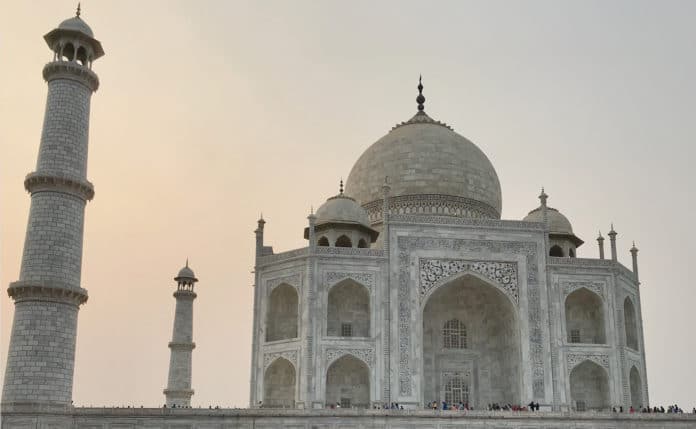We all have our travel heroes — the people who seem to be able to navigate the world with ease, thrive in any culture they visit, and find the most beautiful, interesting, and special things/experiences along the way. Heidi Kelso is this for us: an intrepid traveler, top-of-her-game entertainment producer and founder of Lido, a lifestyle brand that combines the love of travel, fashion and art.
We talked to her about how an accidental trip to India sparked a covet-worthy side career (and lifestyle). Plus, she gives her tried-and-true travel strategies and the best addresses in Jaipur, India.
Describe your personal travel style in five words or less.
High/Low
What first brought you to India and what was the initial spark for the work you are doing now?
I ended up in India by accident. I’d spent many years traveling in Asia where I would score incredible clothing and jewelry (as you do), and friends and colleagues would ask me to bring things back for them. I began thinking about creating a capsule collection of resort wear and sourcing vintage pieces as a side project.
My plan was to bring everything back and sell it at a pop-up store for a few months.
I’m a multi-camera music/entertainment producer in New York so I figured, how hard could this be? Well, as it turned out, hard…very hard.
I could write a book on what I’ve learned (and still continue to learn) about starting a business with no business plan and no experience working in foreign countries.
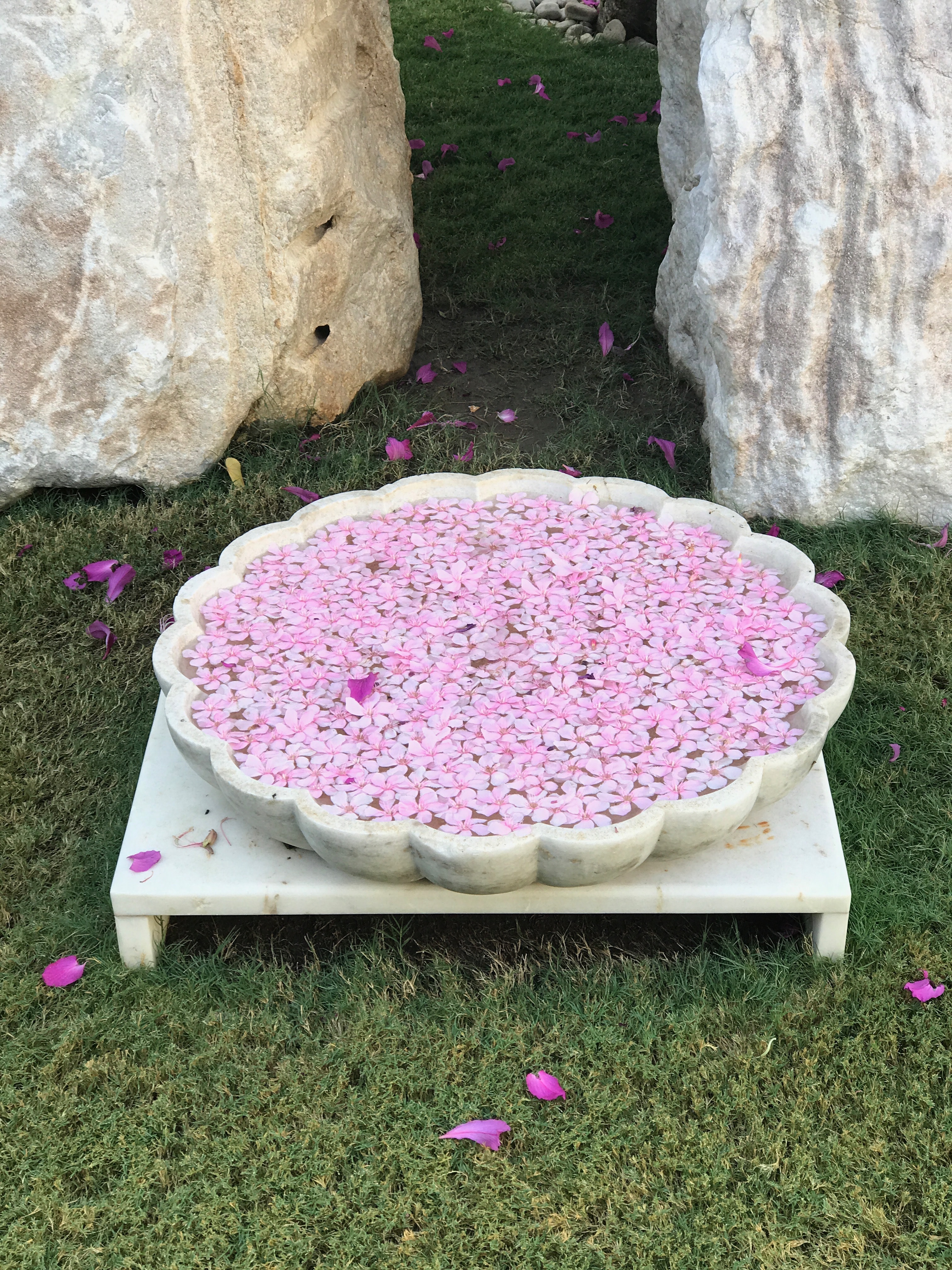

Tell us about your work in India. What do you do there?
There’s a common saying in India: “In India anything is possible,” which is (mostly) true. India is a country of incredible ingenuity and resource.
The three-month pop-up is now a year-round business called Lido. We’ve evolved into designing and manufacturing resort wear, home furnishings, furniture and jewelry in India, Indonesia, Morocco and Turkey. I spend about four months a year in India, using Jaipur as a home base.
When you spend a lot of time in one place, you think you know everything until you are reminded that you know nothing at all. India is full of wonder and mystery.
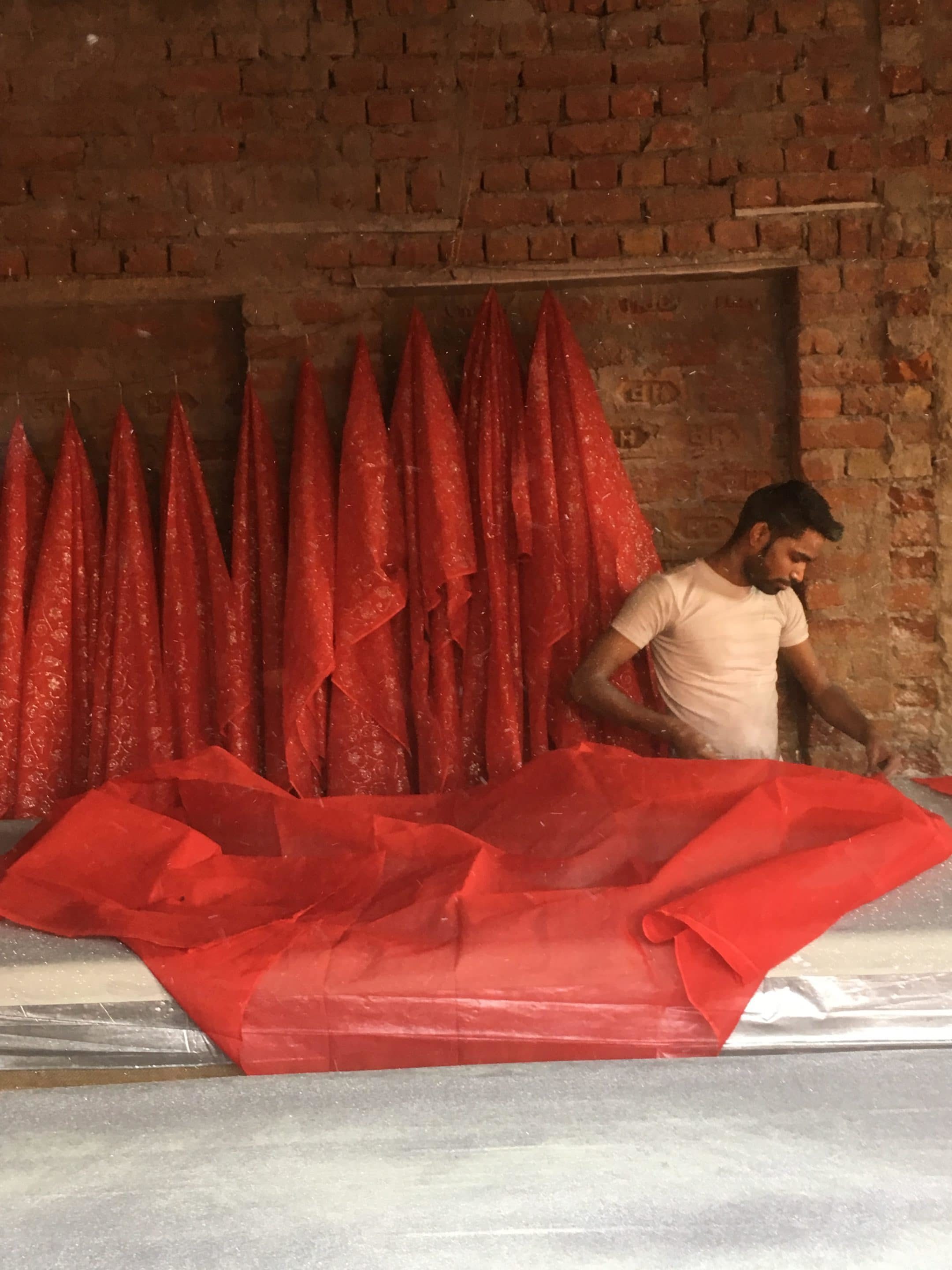
You work really closely with locals, from tuk-tuk drivers to artisans. How did you create this?
I’m very curious by nature, especially when I travel. Before I go anywhere, I go crazy with research. And once I arrive, I cover a lot of ground so I don’t miss anything. I always allow for discoveries because there’s only so much you can know prior to visiting a place.
India is filled with master craftsmen and artisans. Specialties and resources vary from state to state, and it can take a lot of sleuthing to get to the actual artisans (vs the suppliers and middlemen) because they mostly reside and work in extremely rural areas, and they are mostly impossible to find on your own.
Becoming really dialed-in requires an investment of time. Going back frequently and spending extended periods in India allowed me to build relationships and learn a lot more about the customs and the culture.
When I was recently in Jaipur, all the rickshaw drivers knew you by name. All I had to say was “Heidi,” and they knew who you were. Is this just “small world” dynamics or something else?
It’s funny you should ask that. Jaipur has three million people, yet it has a small-town feel. It still amazes me that while you may feel anonymous, many of the locals pay close attention to who comes back often, why they are there, and who they are working with.
People like myself are quite secretive about where they work (a story in itself) because resources are intellectual property. Some tuk-tuk drivers pay close attention so they can share information with tourists to bolster their credibility and fares.
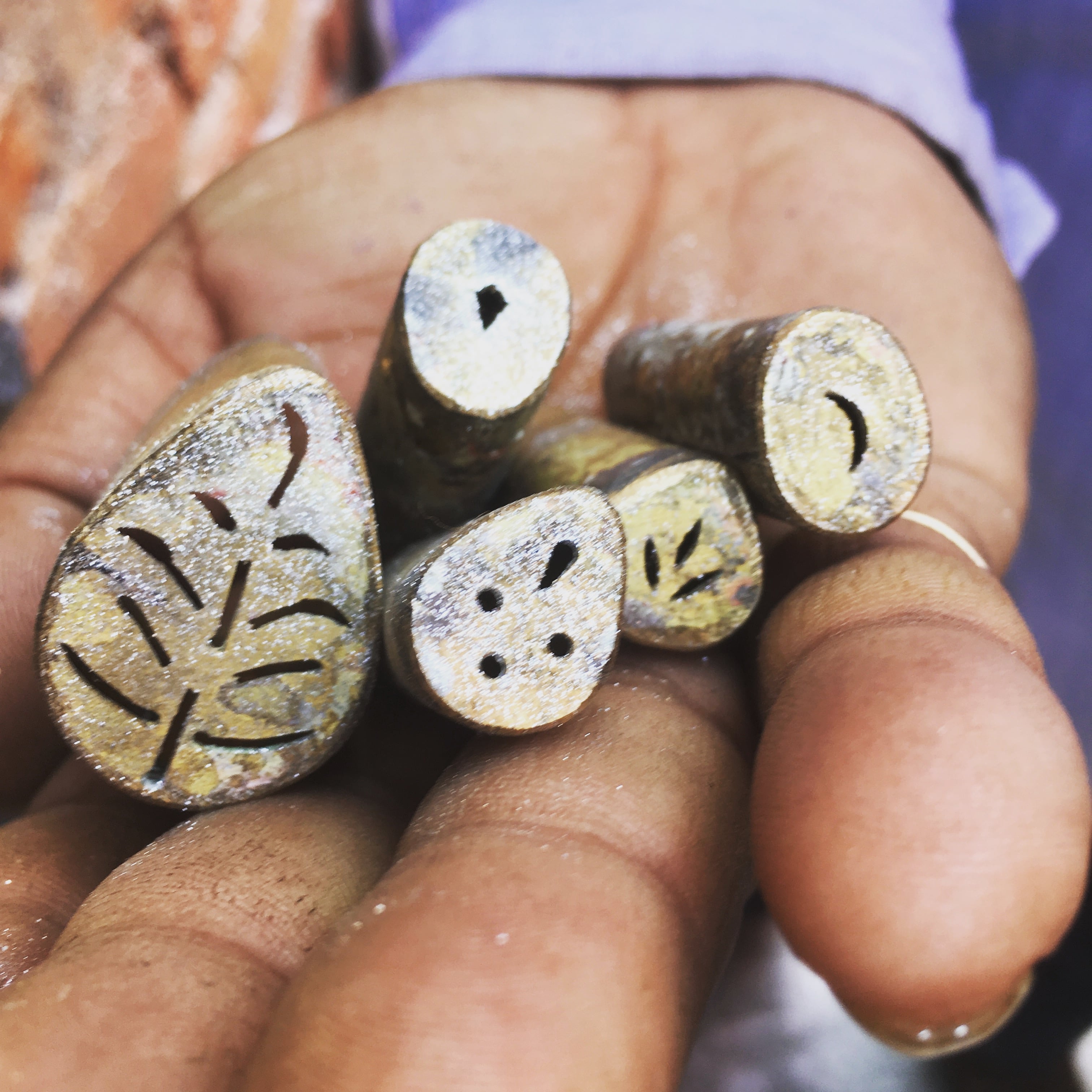
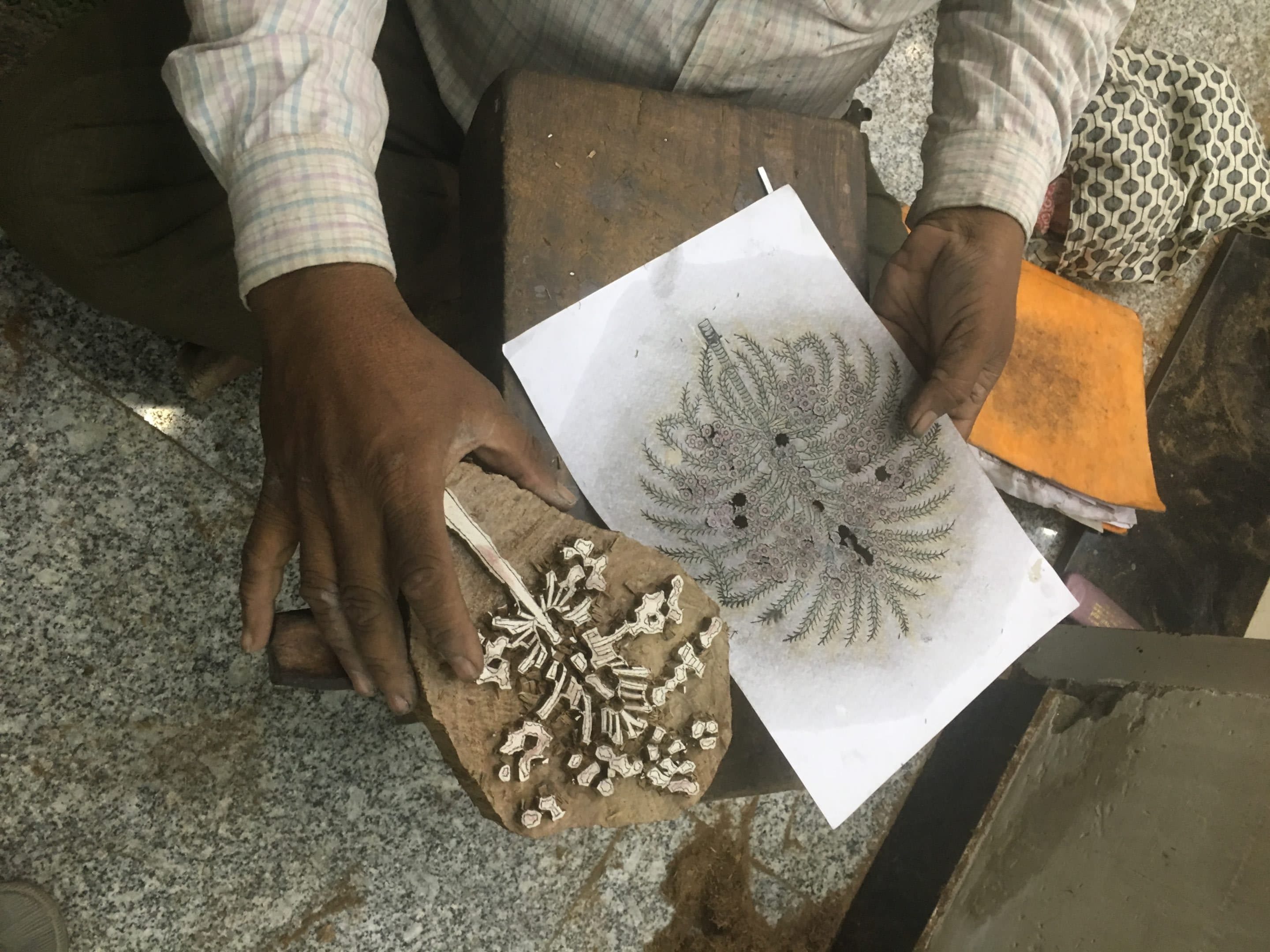
A day in the life…?
I arrive in Jaipur with grids, illustrations (translation: stick-figure drawings) vintage samples and tear sheets so the master tailor who I work with (Master Ji) can create garment samples.
The sampling process takes a long time because I am not trained or educated in design. Master Ji’s tend to be male, and mine does not speak English; we work through a translator and drawings like a bad game of Pictionary. But I am trying to learn Hindi.
The block-printing process is more complicated. Block printing is a centuries-old art form traditionally passed down through families for generations. We love being part of this tradition. It’s taught by process and application and cannot be taught from reading a book.
I plan travel accordingly because block printing only happens in the dry, hot months. During the rainy season (monsoon) production stops because the color doesn’t set properly without the sun and heat. The wet weather also affects the color and the crispness of the design.
And when you’re not working?
I tend to work 6-7 days a week when I’m there, but on a rare day off I will spend it at Galta ji and hang out with the monkeys.
Your favorite off-the-beaten-path discoveries?
They happen when you make a wrong turn. On our very first trip, a manufacturer sent us to a block printer in a very rural area. We didn’t like the style, but a few doors down at another house in the village we found another family factory and have worked there ever since. It would have been impossible to find on our own.


What gets activated the most for you in India…eyes, ears, brain, heart?
All of it. There’s truly no place like India. It’s a sensory overload all the times.
You travel alone a lot. What’s that like?
Ironically, the few dodgy experiences I’ve had while traveling happened when I wasn’t traveling alone!
I do travel differently when I’m alone though. I’m focused on work, more observant, and take fewer risks. For all the wonderful people I meet in India (or any country really), there are scam artists and opportunists who prey on foreigners. You are constantly approached in India so sometimes it takes a minute to figure out the angle and who is legit.
I’ve worked in a male-dominated industry my whole career, and most business in India is dominated by men. I do get very frustrated when I feel I’m being taken advantage of, but I’m a hard negotiator, and I’ve always worked with ethical people. I find they take you as seriously as you take yourself.
How do you get around?
In the early days, drivers and tuk-tuks. But this was before Uber. I still have great drivers, but I generally don’t use them as often.
The most beautiful/strange/surprising thing you saw on your last trip?
In a very rural area, we were going up a steep hill. As we rounded a corner, a caravan of people coming the opposite way were on foot with bare feet dressed in long flowing white robes, white hair wraps and white face masks and were carrying a sadhu (a holy man), also in all white, on a large four-poster bed.

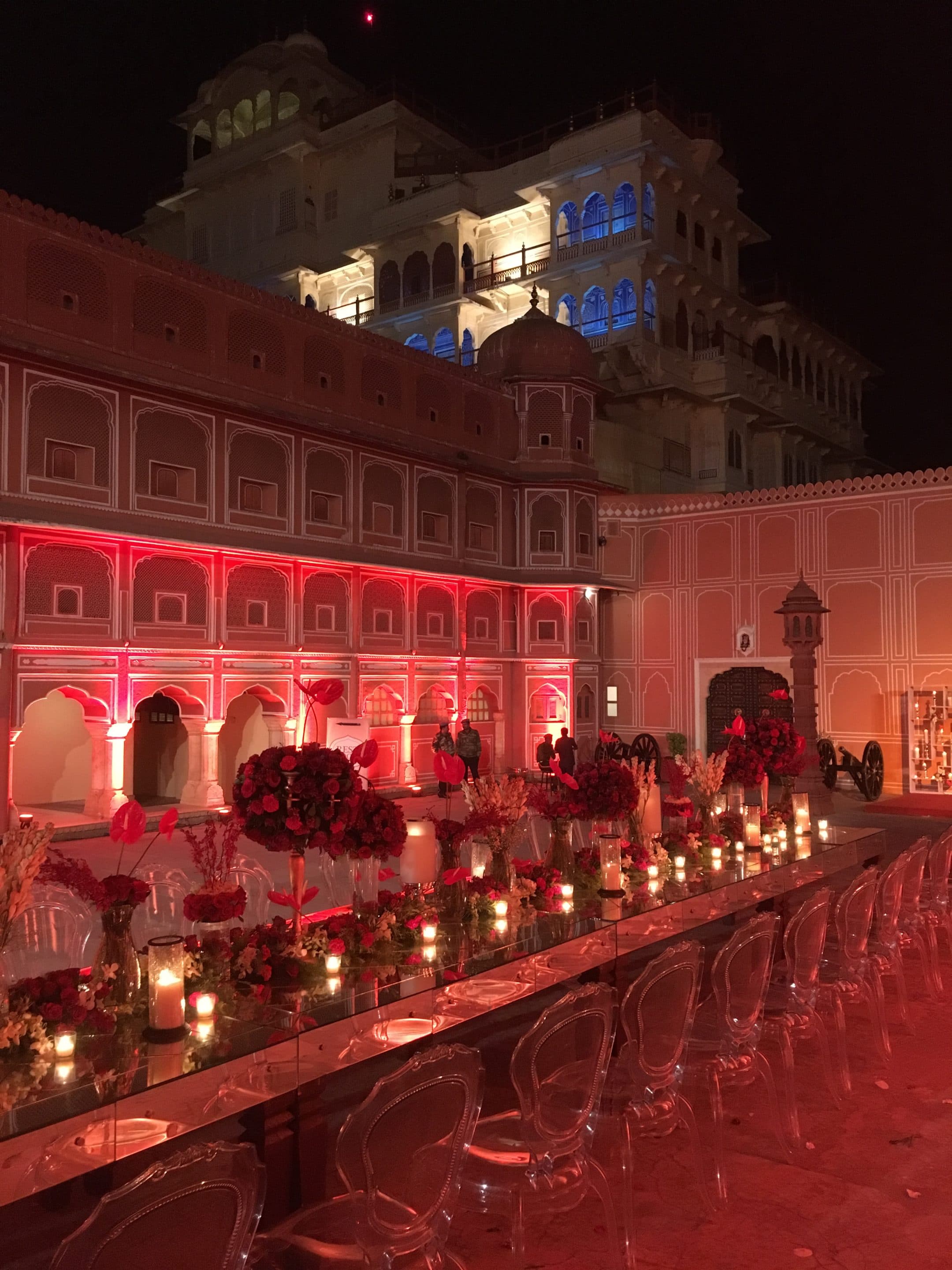
As it’s your base when working in India, what are some Jaipur favorites?
Best Chai: the Sahu Tea Stall, which dates back to 1968. They prepare chai the classic way, on coals and an open flame. It’s located in the main bazaar, but the sign is in Hindi. It’s tiny and always packed.
Coffee and dosas: Head to the Indian Coffee House on MI Road. It’s set back in an architectural building and it’s very basic, no frills. They have southern Indian dosas and a full egg menu and prices are extremely reasonable. It’s a Jaipur institution.
Healthy lunch (and salad!): Anokhi Cafe. It’s a huge ex-pat destination and you always run into someone there.
Boutique Hotel: 28 Kothi. A chic little guesthouse with a very nice, laid-back cafe.
Silk tops: I mostly shop with my vendors, but I always hit Rasa, Nayika and Satayam for silk tops. They have two locations: one near City Palace and in the front of Narain Niwas hotel.
A bit of glam: Bar Palladio. I very rarely eat anything other than Indian food when I’m in India, but I always get the Lemon Asparagus Spaghetti and Caprese at Bar Palladio.
Favorite hangout: Galta Ji temple, about 10 miles out of Jaipur. It’s a nice easy walk (hike) up to the top and it’s overrun with monkeys. There are temples and seven water tanks for bathing and it’s a destination for Hindu and sadhu pilgrimages.
What are the most stunning places you’ve been to in India so far?
Mandrem, Goa at sunset, sailing the Ganges in Varanasi at dawn, the Himalayas in Kashmir, Birla Mandir‘s white marble masterpiece in Kolkata, the Thar Desert at the edge of Jaisalmer and the great Rann of Kutch are all incredible.
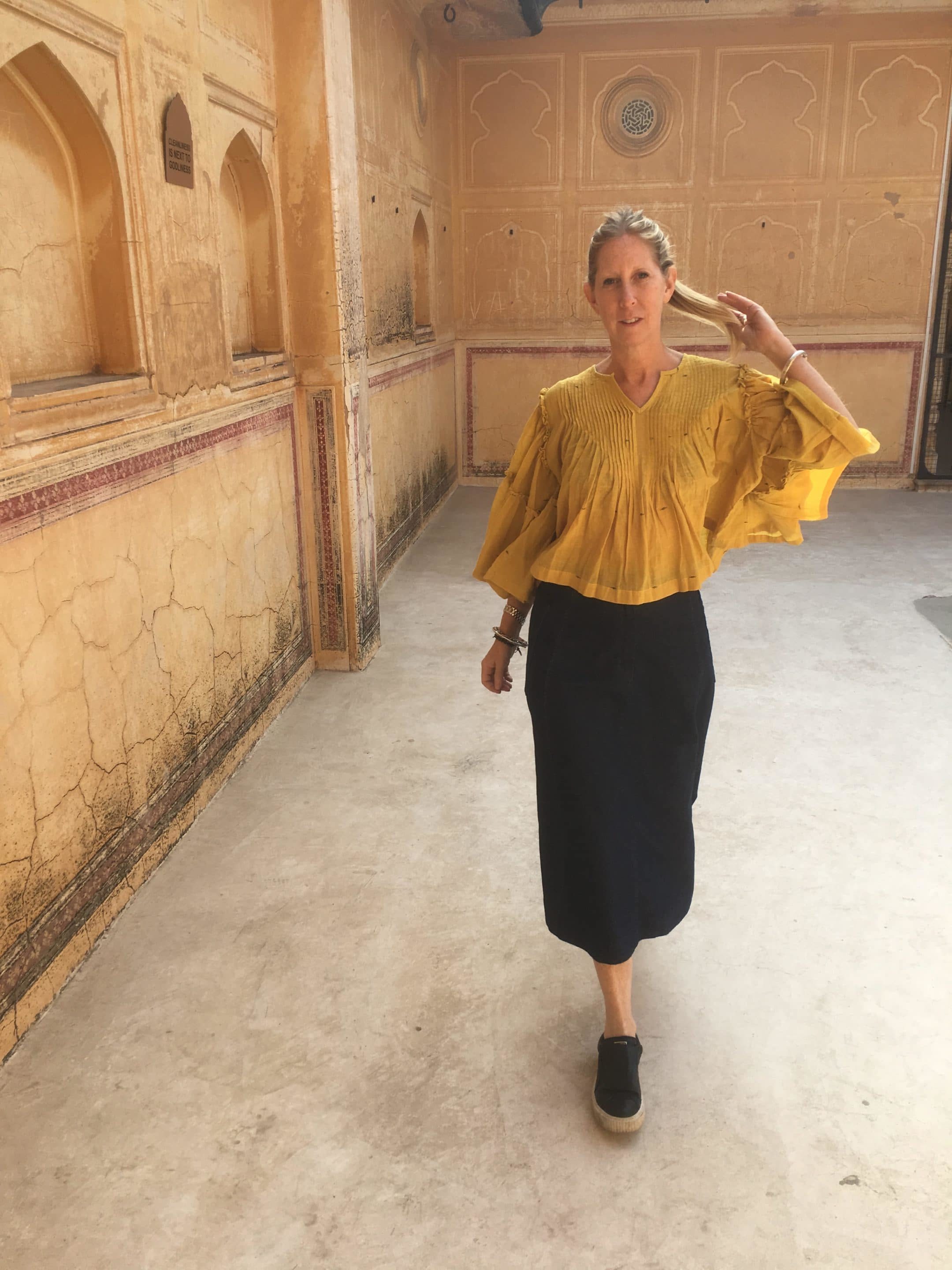
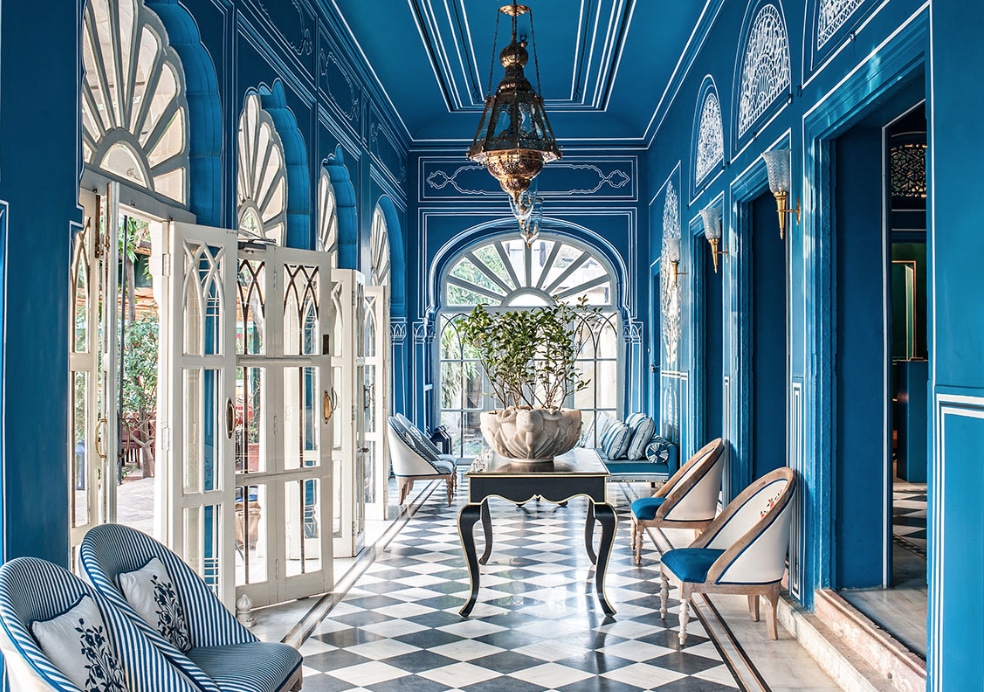
What are some of your tried-and-true travel essentials?
I have a whole packing system which starts with the same packing checklist for any trip anywhere. From there, I tailor it to the country I’m going to.
Headphones are essential, a thin cashmere wrap is essential, a back-up phone battery charger, all my adapters, one new notebook, some old notebooks when I need past notes, books (no Kindle for me), zip pouch for receipts, iPhone, iPad, computer, power bars (I’m often in the middle of nowhere), tampons (not sold in many places), hair ties, my pink calculator from Japan (it’s become a tradition) and my small wood initialed tape measure my sister gave me. Anything else can be purchased.
I have an entirely different wardrobe I pack for India, which sounds indulgent, but it’s not.
I pack very light and alternate between several items depending on the season. I always pack medium-length silk kurtas in earth tones and wear them almost every day. I tuck the front into jeans and leave the back long.
They weigh nothing and take up no space as they are tissue thin. I respect the culture, and I’m doing business, so I cover up. Sometimes I bring overalls when I’m working because of all the pockets. I keep a sari in India for nice occasions.
India can seem overwhelming to plan. How can we travel more like you?
I think having a driver for your first trip is essential. It’s very affordable and it allows peace of mind as you shop, sight see, etc. You won’t stress about finding transport, carrying heavy bags around, wondering if you are being ripped off, or being asked to visit a driver’s cousin, friend, uncle’s factory, etc.
If you’re someone who doesn’t like to do a ton of your own research or plan, hire a cool bespoke company like India Beat.

Most important piece of planning advice for anyone wanting to go there?
India lesson #1: You can’t rush India.
I’m always anxious to get the day going. But every morning before we work, my manufacturer goes through his workspace for about 15 to 20 minutes with incense and prayer (puja), which is a ritual to bless the space and give thanks to his deity. It’s a beautiful start to the day.
Next on your list?
Kenya, early next year.
Heidi Kelso is a NYC-based multi-camera broadcast producer and talent executive of large-scale entertainment specials, and the founder of Lido, a lifestyle brand that combines the love of travel, fashion and art. See more @LIDOworld

